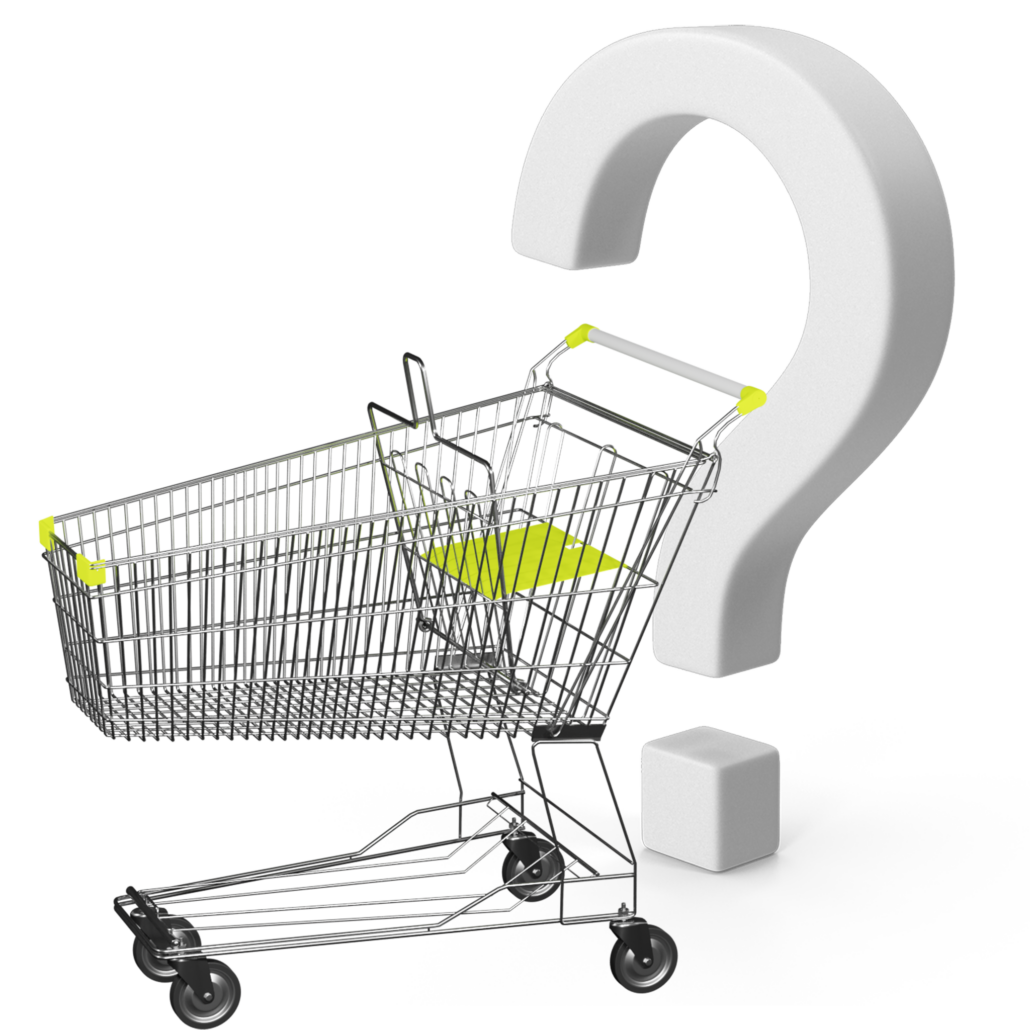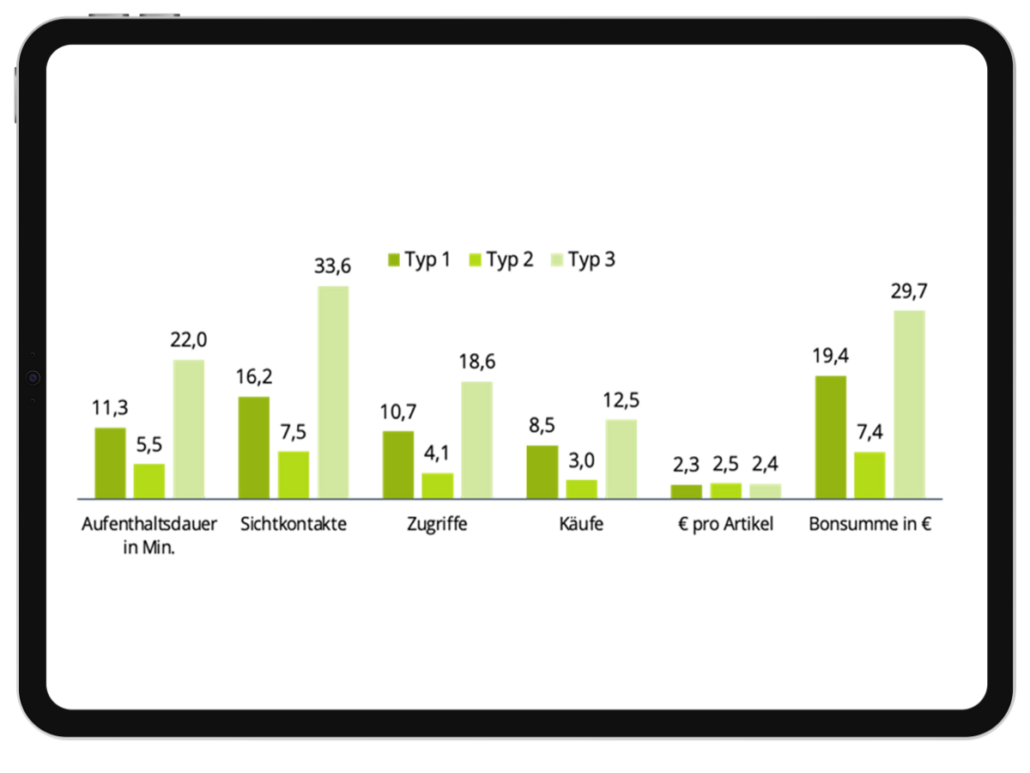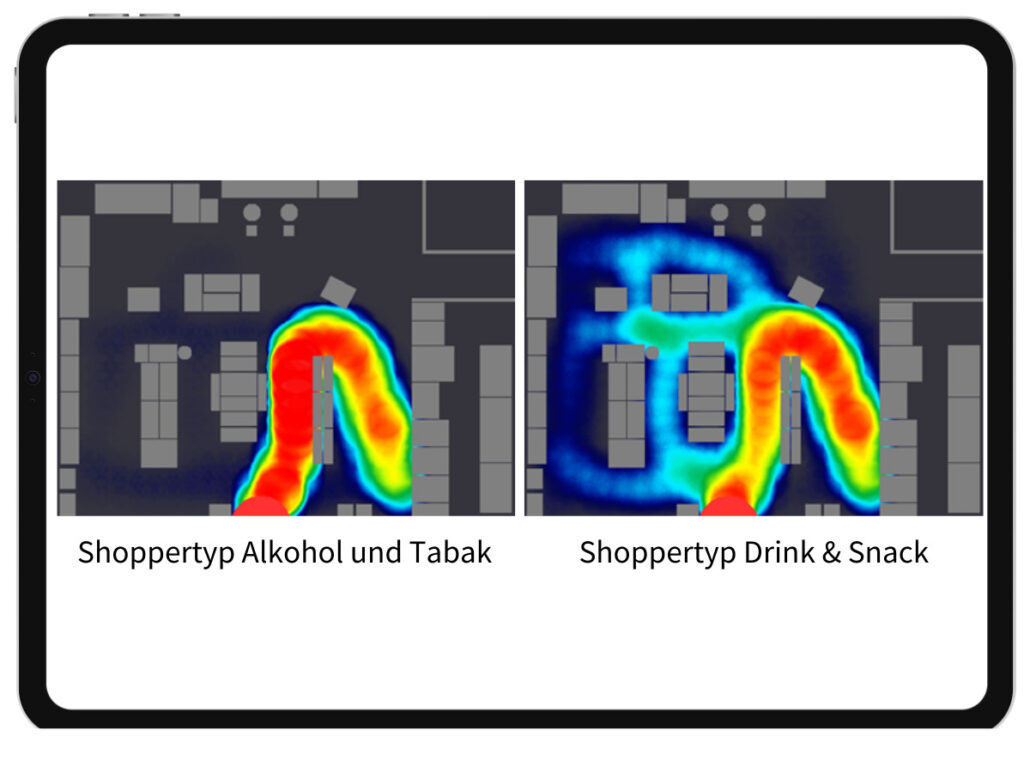
“Every Jeck (person) is different.” (Cologne saying)
Shopper Types
Every person is unique, and in marketing, we often tend to simplify the complexity of reality. The illusion of simplification is a cognitive pattern that helps us process information and make quick decisions by reducing complex problems or situations to simple solutions or explanations. However, this illusion can lead us to overlook important nuances or perceive reality with distortions. It’s essential to be aware that the world is often more complex than it initially appears, and simple solutions may not always suffice to grasp the diversity and depth of reality.
When we look at our clients’ often “simple” target audience typologies based on survey results, focus groups, or heuristic typologies like limbic types and compare them with the actual behavior of shoppers in reality, we find that, in most cases, there are no stable behavioral correlates: Shoppers behave differently in reality.
Our conclusion regarding the target audience typologies we’ve tested so far is that they fall prey to the illusion of simplification. They may sound good, appear plausible at first glance, easily translate into marketing target groups, are easy to sell, but they don’t hold up at the point of sale (PoS). In short, these typologies don’t deliver on their promises.
USP
Real Types: We create shopper types for each retail partner based on actual behavior. To do this, we analyze detailed behavioral sequences, pathways, visited categories, and purchased items using special statistical clustering methods. Examples include:
- The Quick Short Shopper
- The Long Circular Shopper (Main Loop User)
- The Fresh Shopper
- The Weekly Shopper
Actual missions can be analytically derived based on observed behavior. For instance, if we observe shoppers entering the store, heading directly to a category, grabbing an item like milk, and then quickly rushing to the checkout, we can classify this shopping process as a quick individual purchase.
Subsequent exit interviews complement and expand on the types and missions identified through observation with the respective contextual explanations. For example: The milk was empty.
Benefits
- Authentic Shopper Types and Real Shopper Missions
- Our studies show that each retail partner has its own shopper types, and these vary in every European country.
- The good news is that each shopper type can be understood as its own target audience and can be addressed and activated with appropriate measures. Quantifying shopper types and evaluating their shopper performance allows for tailored design of retail landscapes and can sharpen one’s own profile.
- Less is sometimes more
- Often, high budgets are allocated to agencies in the field of shopper marketing and shopper activation to develop creative and extensive shopper types, missions, and journeys with maximum reach of touchpoints. However, our studies show that relatively normal people with manageable and everyday shopping missions can be found on retail spaces. Whether it’s filling up the empty fridge, getting milk for the office, doing the daily shopping, or taking advantage of budget-friendly offers from the flyer – shopping is primarily a task rewarded with the successful completion of the mission.
- The diversity of shopper behavior is more complex than traditional target audience typologies suggest. With our approach, you get a realistic assessment of shopper behavior, shopper types, and missions. We provide you with a solid foundation to adjust your strategies and measures purposefully and increase your chances of success.
With our Shopper-Types you get real shopper types based on actual shopping behavior.

Questions from our customers.
- Which shopper types are most commonly found in the store?
- What shopping paths do different shopper types use, and how can we optimize them to make their navigation easier?
- Are there specific shopper types prone to impulse buying, and how can we target these customers effectively?
- Which shopper types prefer shopping in specific supermarket sections (e.g., fresh products, non-food, toiletries), and how can we design these areas to meet their needs?
- How long do different shopper types typically spend in the supermarket?
- Which shopper types are particularly price-sensitive, and how can we present attractive offers and promotions to them?
- Are there shopper types that prefer specific brands or products?
- Do heavy buyers distribute themselves across all shopper types?
Methods for the solution
-
Shopper Observer
Behavior | Observation
-
Shopper Impact
Experience | Implicit Measurement
-
Shopper Mind
Experience |Accompanied Shopping
-
Shopper Emotion
Experience | Emotion Measurement
Result examples


Discover more solutions
Overview of all solutions and methods



